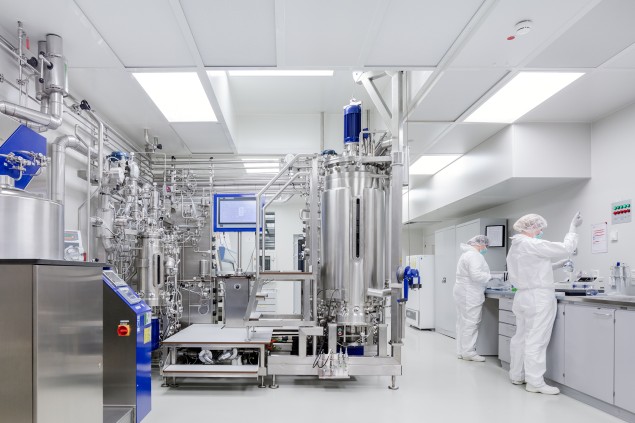ESETEC®: WACKER Enhances Bacterial Secretion System for Manufacturing Pharmaceutical Proteins
Munich/Jena, Feb 22, 2021
WACKER has enhanced its patented ESETEC® Escherichia coli bacteria-based secretion system for manufacturing pharmaceutical proteins: by decoupling the production from the expression phase during manufacturing, proteins can now be secreted to the culture medium in a fully controlled manner. For pharmaceutical proteins that are very difficult to manufacture, this can increase the yield by a factor of 8, increasing the time and cost efficiency in production.

“In enhancing our ESETEC® secretion system, we now offer record yields in the production of challenging proteins, and significantly faster production rates compared to other secretion systems, such as mammalian cell cultures,” says Dr. Phillippe Cronet, who is in charge of developing biotechnological production processes at Wacker Biotech. The WACKER Group concentrates its biopharmaceuticals activities within Wacker Biotech.
The patented ESETEC® technology is based on modified E. coli strains, which secrete the desired proteins into the culture broth in the correct folding conformation during fermentation. This process can be assisted by the additional overexpression of proprietary folding helpers. With ESETEC®, even complex molecules can be produced in high yields and be secreted into the culture medium in active form. However, the efficiency of secretion is highly dependent on the properties of the particular target protein. While some proteins are easily secreted into the culture medium, some others remain trapped in the periplasm of the E. coli bacteria. To solve this problem, Wacker Biotech has modified the secretion system.
The latest generation of the ESETEC® system now allows proteins to be expressed into the culture medium at a controlled rate. The principle of controlled expression involves decoupling the production phase from the expression phase. Product formation is initiated by the addition of a specific inductor. Expression is then started by the induction of an expression factor. Through active control of the product residence in the periplasm, the folding helpers expressed here have an optimum effect. This maximizes the folding and secretion efficiency of difficult-to-produce pharmaceutical proteins, such as antibody fragments. Thanks to the enhanced ESETEC® system, yield can already be increased by a factor of 8 in a typical system.
Experts estimate that the market for pharmaceutical proteins, i.e. “biologics”, is growing at about nine percent per year. WACKER invests continually in its biopharmaceutical business. At its biotech site in Amsterdam, for example, production capacities are currently being expanded with a new 1,500 liter fermentation line. “Besides such key expansions, we also invest continually in innovation and enhancing our proprietary technologies. The improved ESETEC® is an important milestone in our efforts to manufacture even complex proteins efficiently for our customers,” says Dr. Guido Seidel, managing director of Wacker Biotech GmbH.
About Wacker Biotech
Wacker Biotech GmbH and Wacker Biotech B.V. are full-service contract manufacturers of therapeutic proteins, LMPs and vaccines based on microbial systems. The portfolio extends from strain/process development to analytical testing to GMP production for clinical and commercial applications. Wacker Biotech maintains three GMP-compliant, FDA- and EMA-certified production plants in Amsterdam and in the German cities of Jena and Halle. Wacker Biotech GmbH and Wacker Biotech B.V. are wholly owned subsidiaries of the Munich-based WACKER Group.
For more detailed information, visit: http://www.wacker.com/biologics
Presspicture
WACKER Biotech Fermenter - Jena
View of production at Wacker Biotech GmbH in Jena: modified E. coli bacteria are used to produce pharmaceutical proteins in fermenters. (Photo: WACKER)
Download picture (JPG, 2.0 MB)Contact

Wacker Chemie AG
Media Relations
Manuela Dollinger
Tel. +49 89 6279-1629
Send message
Download
Press Information
(PDF | 233 KB)





